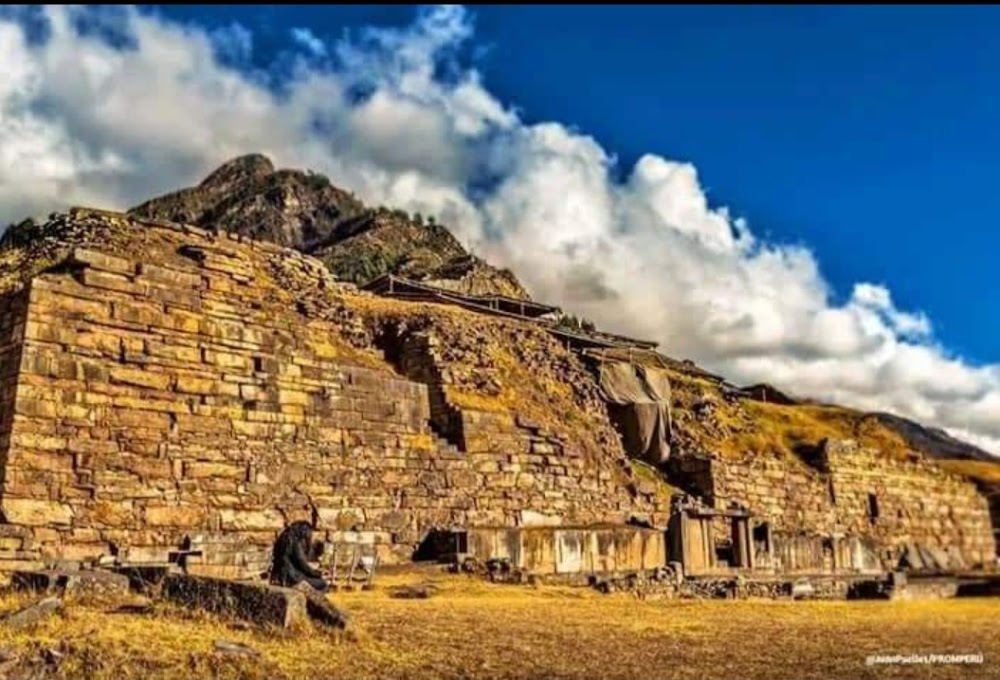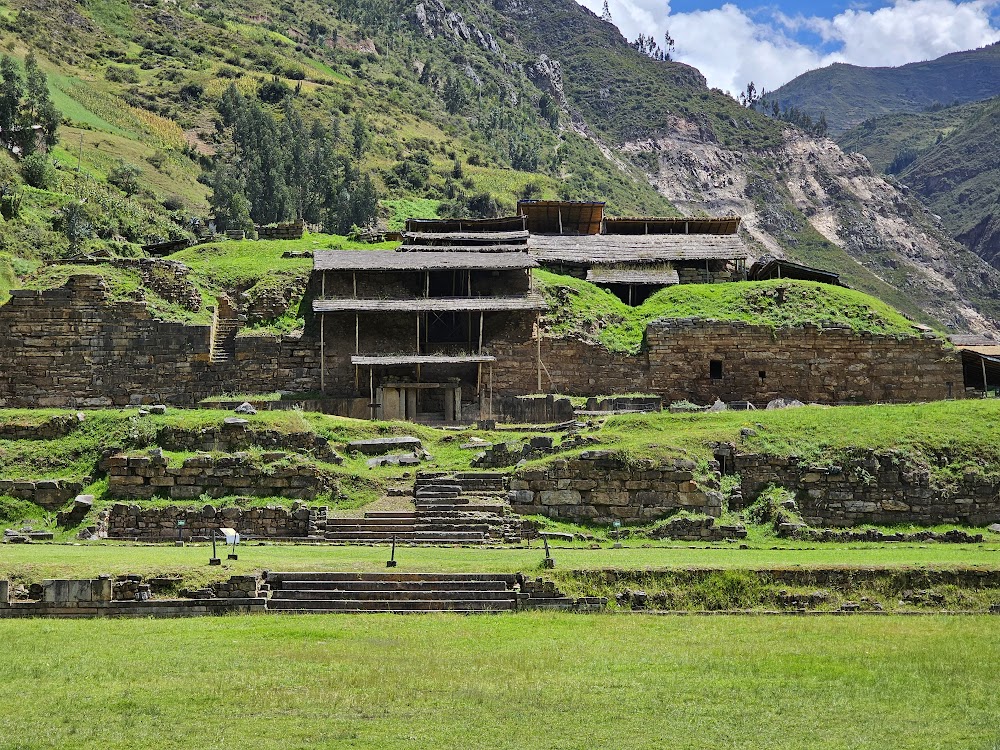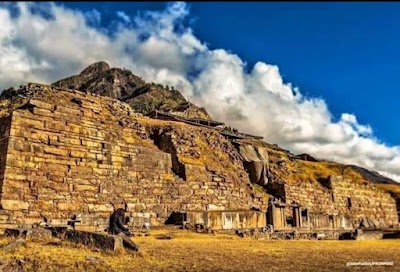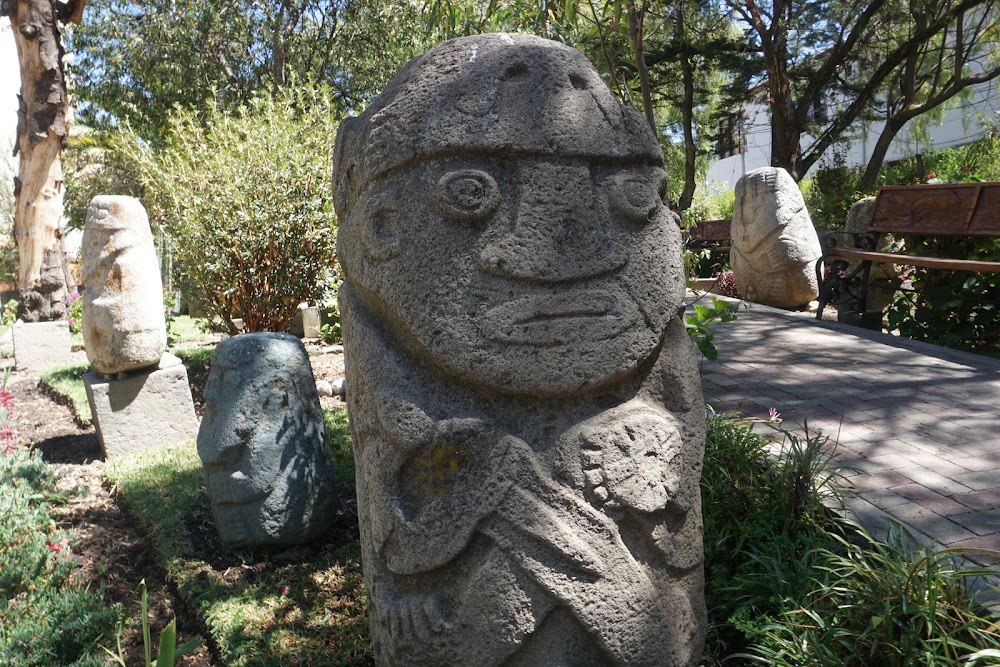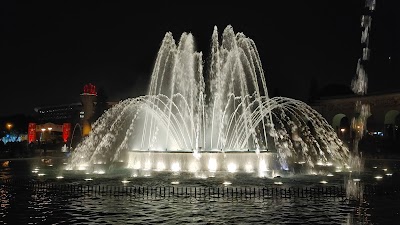Chavín de Huántar (Chavín de Huántar)
Overview
Chavín de Huántar is an ancient archaeological gem nestled in the breathtaking Andean highlands of Peru, specifically within the Áncash region. This remarkable site, constructed by the Chavín civilization between 900 and 200 BCE, stands as one of the most significant religious centers of its time, showcasing the ingenuity and spiritual depth of its creators.
Constructed over several centuries, Chavín de Huántar served a dual purpose as both a ceremonial and political gathering place. The site boasts an array of monumental structures, including temples, plazas, and an impressive network of underground passageways. These expertly engineered galleries not only supported the towering structures above but also likely played a role in various ceremonial activities, adding to the site's mystique.
The centerpiece of Chavín de Huántar is the Old Temple, an architectural marvel characterized by its distinctive U-shape, a hallmark of Chavín religious design. Inside, visitors will find the Lanzón, a stunning 4.5-meter-tall granite stele that depicts a divine figure adorned with jaguar-like features and snakes for hair. This monolithic sculpture holds deep religious and cultural significance, reflecting the reverence the Chavín people had for their deities.
Chavín de Huántar is renowned for its unique construction technique, utilizing finely carved stone blocks that fit together seamlessly without mortar. These stones were often transported from great distances, emphasizing the remarkable effort and coordination involved in the site's construction. Many structures display intricate carvings, showcasing the exceptional skill of Chavín artisans and their dedication to artistry.
Another fascinating aspect of this site is its advanced drainage system. Ingenious engineers designed an elaborate network of canals beneath the temple structures to mitigate water damage during the rainy season. This remarkable feat of ancient engineering highlights the Chavín civilization's expertise in architectural design and environmental management, ensuring the longevity of their sacred site.
Visitors can also admire a plethora of monolithic sculptures and carved stone artifacts, including tenon heads. These stone carvings, featuring stylized human and animal faces, originally protruded from temple walls and likely held significant ceremonial importance, serving as protectors of the temple.
Beyond its religious and architectural significance, Chavín de Huántar was a critical cultural and political hub in the region. The site facilitated the spread of Chavín art, religious beliefs, and technology throughout the Andean region, leaving a lasting influence on subsequent cultures. One can almost envision the lively atmosphere during its peak, with priests and shamans conducting elaborate rituals while pilgrims and locals gathered to witness these divine proceedings. The air would be filled with the aromas of ceremonial fires and the melodic sounds of conch shell trumpets, integral to Chavín rituals.
Today, Chavín de Huántar continues to captivate scholars and visitors alike, offering invaluable insights into pre-Columbian civilizations in the Andes. Designated a UNESCO World Heritage Site in 1985, efforts have been made to preserve this cultural treasure for future generations. Visitors can explore its maze of tunnels, marvel at its intricate stone carvings, and stand in reverence before the sacred Lanzón.
The legacy of Chavín de Huántar endures, not merely through its physical remnants but also as a testament to the profound impact the Chavín civilization had on the culture and history of ancient Peru. Whether you're an archaeology enthusiast or a curious traveler, a visit to this extraordinary site is sure to leave you inspired and awestruck.


